Coming into 2024, Nashville SC had a perfect record of reaching the MLS Cup Playoffs in their four full seasons to date as a franchise.
However, with only weeks left in the regular season, the record seems likely to be shattered, with Nashville currently being one of the worst sides in the entire league.
Having ended last year on a downhill slide following a brilliant League Cup campaign in the summer, when they reached the final, Nashville have been unable to stop the rot this term and has not looked like a playoff team all year long.
This led to them cutting ties with inaugural manager Gary Smith back in May.
Having taken their time in appointing his successor, they finally managed to find one in former US Men’s National Team interim coach and assistant BJ Callaghan.
Callaghan is taking on his first permanent head coaching role following his brief interim spell with the USMNT, with whom he remained unbeaten and won the CONCACAF Nations League title.
But with no prior experience in this role, it was a gamble for the Nashville board to hire him to try and turn things around in such a difficult season.
But since his arrival, there’s been an improvement of sorts that has kept Nashville’s faint hopes of reaching the post-season again alive going into the final weeks of the season.
This tactical analysis will provide an in-depth analysis of the most noticeable changes BJ Callaghan’s tactics have brought to Nashville SC’s style of play and what those changes could mean for the club in the immediate future.
Nashville SC Defensive Phase: Shift To High Pressing
Nashville’s biggest problem prior to Callaghan’s appointment was putting the ball in the back of the net.
They did so the least of all MLS teams, with just 26 goals in the first 25 rounds of the season.
However, the biggest immediate change under Callaghan didn’t come in improving their strike rate.
It was the way BJ Callaghan’s formation changed that caused Nashville SC to start defending higher up the field, looking to pressure opponents and win back possession closer to the opposition’s goal.
Under Gary Smith’s coaching style, Nashville had developed a reputation for being an organized defensive unit that was tough to crack and relied on its standout attacking individuals to produce the goods on the other end.
However, as they struggled to consistently produce offensive results in this way, it was clear that a change of approach to their attack was needed.
Callaghan was brought in to do this, starting by shifting the team’s mindset from looking to sit deep and defend to becoming braver and trying to actively participate in the game by pushing bodies forward both on and off the ball.
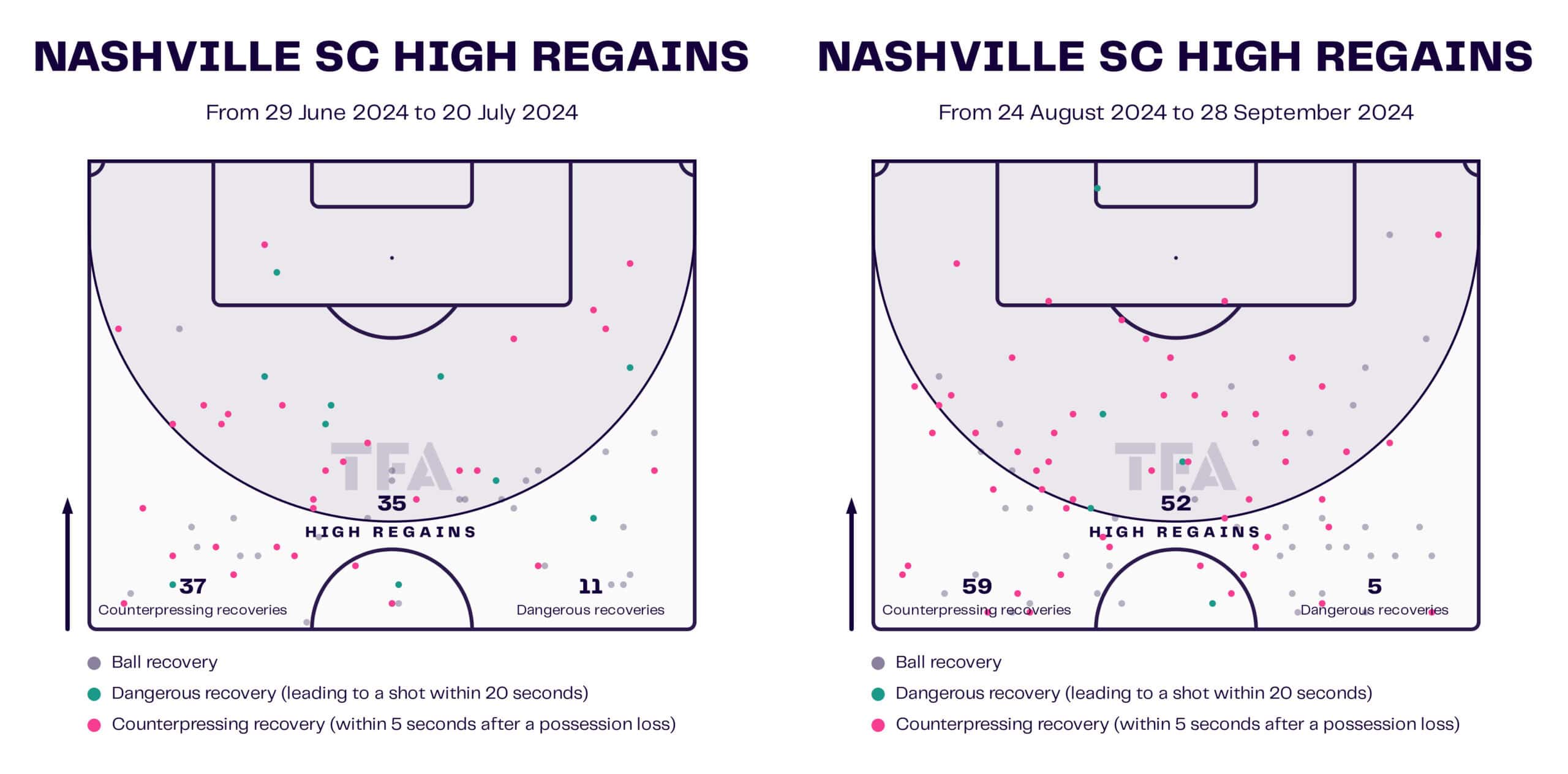
The data viz above captures the results of this change under BJ Callaghan’s coaching style.
As we can see, in the final weeks before the League Cup break and Callaghan’s subsequent arrival, Nashville enjoyed much more success recovering the ball in more advanced areas of the pitch than in the period since.
The data above captures the last six league games before Callaghan and the first six league games under him for an equal comparison, and the results are telling.
They’ve made 22 more counter-pressing recoveries and 17 higher regains in the same number of fixtures, many of them coming in the opposition’s defensive third, as circled above, indicating that there has been immediate progress in this aspect of their game.
Callaghan insisted after taking the job that Nashville’s personnel was energetic and capable of doing things his way; so far, judging by the data, he wasn’t wrong.
Let’s look at some examples of Nashville’s newfound pressing strategy to illustrate this change further.
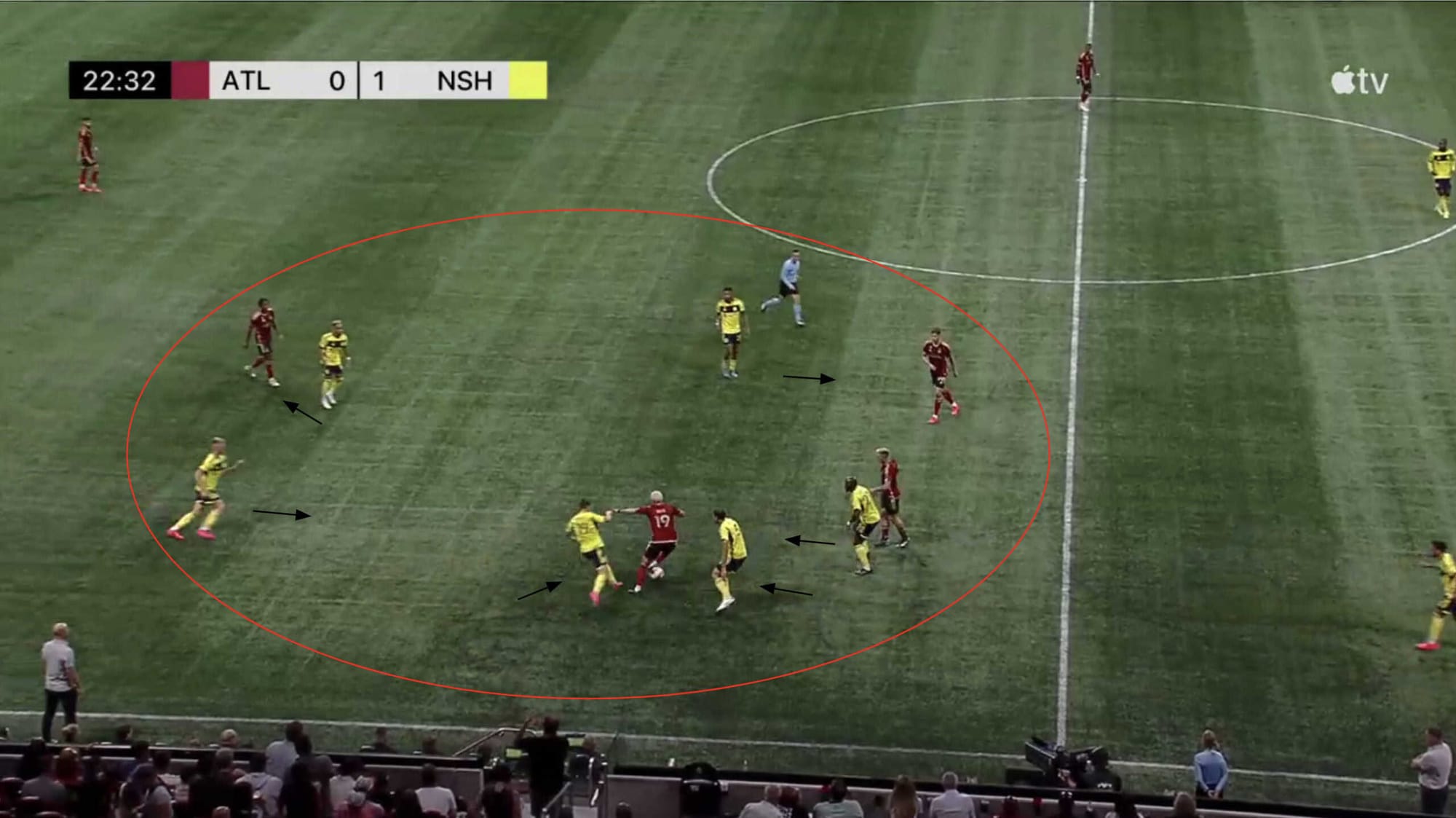
The above is from the recent win at Atlanta United, where Daniel Ríos, who had just received the ball in his own half, was put under immediate pressure by several Nashville players.
We can see six different Nashville players in that small area circled in red, while Atlanta only has three others nearby Ríos, all of which are covered by at least one player in a yellow shirt.
Ríos tries to play his way out of the press but inevitably loses the ball.
Seconds later, this turns into a chance at goal for Nashville, although it isn’t converted.
Even though it didn’t end up in the back of the net, it’s an excellent example of what the new Nashville looks like under Callaghan’s tactics and how much more willing they are to take risks to regain possession in their favour.
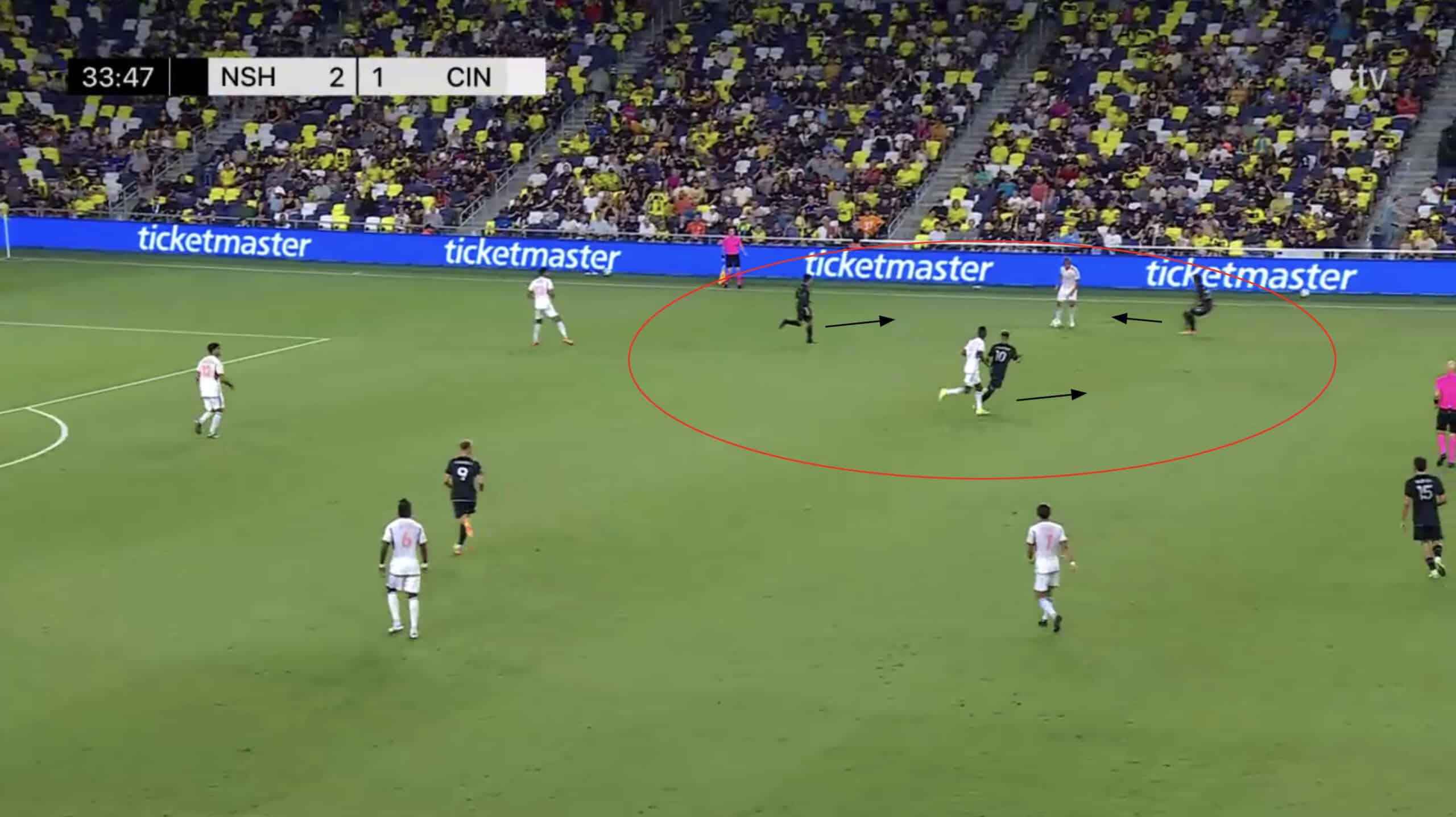
Here’s another example from the Cincinnati game.
The opposition’s build-up from the back takes them to the left-hand side of their own defensive half.
Once the player shown on the ball takes control of possession, we can see Shaq Moore pushing up from his right-back position to try to pressure him to make a decision.
In the meantime, we can also see Hany Mukhtar tracking the nearest passing option’s run down below and Jonathan Pérez cutting off the opportunity for the ball to be played short backwards to the only other nearby player.
This leads to a risky pass being played down.
Still, Mukhtar anticipates it well and recovers the ball for his team to initiate another opportunity to hit on the counter.
These are just a couple of examples of Callaghan’s pressing scheme in action so far with Nashville and situations where it’s paid dividends for them.
But while these numbers and improvements are encouraging, they don’t ultimately fix Nashville’s biggest problem before he started: scoring goals.
Let’s take a look at what else has changed under Callaghan, particularly on the ball.
Nashville SC Attacking Phase – Two Bright Sparks
On the ball, two main changes have been noticeable under BJ Callaghan’s style of play, which have improved the team’s offensive outcomes.
These two changes have brought more success in offensive areas for two players, Shaq Moore and Hany Mukhtar.

Here’s a good example from the Atlanta game that highlights both players’ involvement in creating a good attacking opportunity and why it’s important to note.
We can see Mukhtar dropping deep from a more advanced position into an empty space between Atlanta’s lines to receive a pass from his defender.
As soon as he receives the ball, he is able to turn towards the goal with time and space on the ball.
When he does that, we can see Moore making a bursting run on the overlap, which takes him to the byline, where he receives the ball in space.
This is an important detail because it again highlights Callaghan’s desire for the players to play more boldly and on the front foot, which has caused them to shift their mindsets.
Moore hardly ever made these sorts of runs in the earlier part of the year, as his job under Smith was to defend first, and any attacking contributions were very much secondary.
Under Callaghan, he’s taken a much more active role on the offensive side of things, particularly in transitions, which we can see below.
Shaq Moore Crossing Zones Map
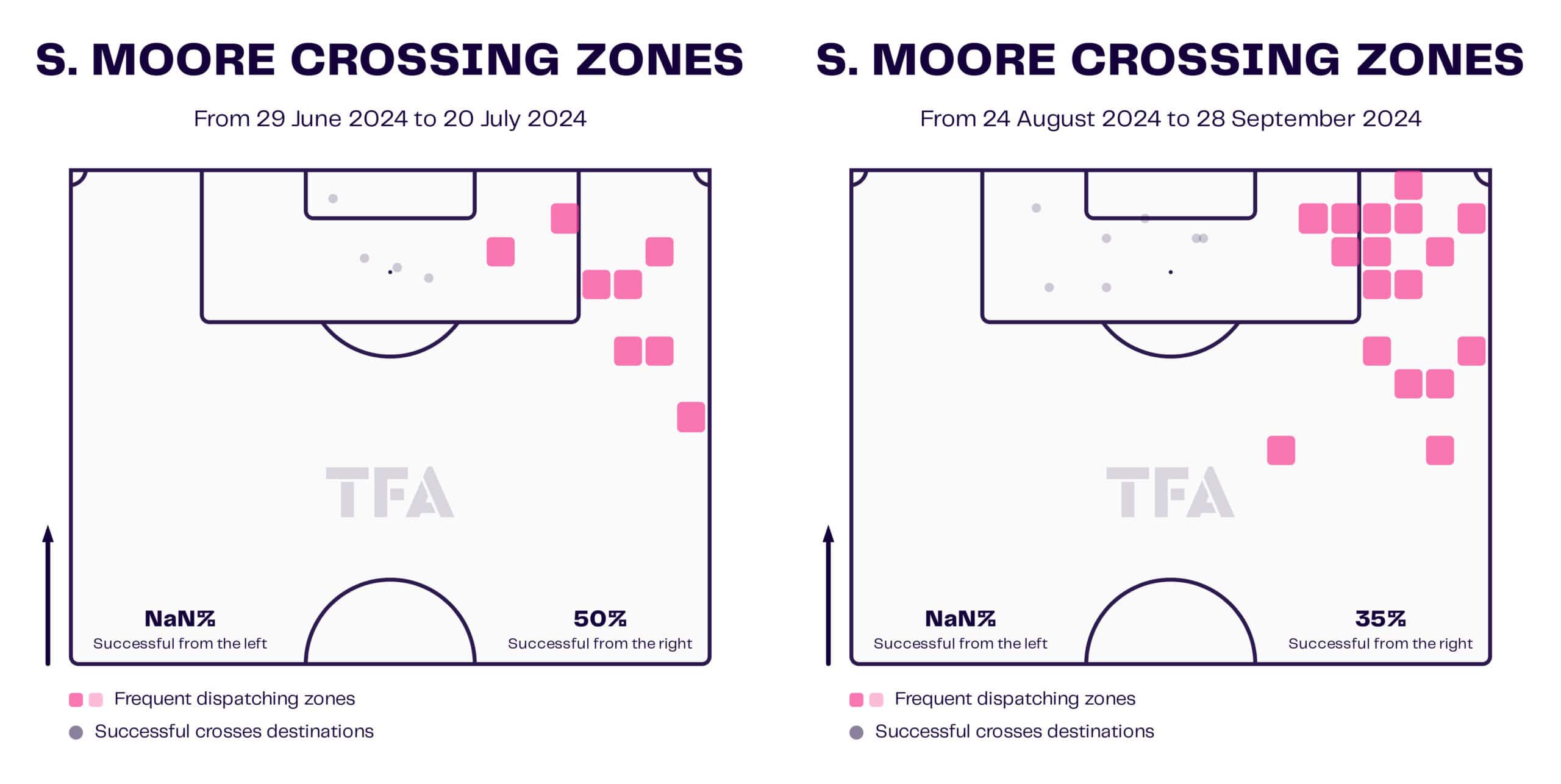
As the data above illustrates, Moore has made a lot more overlapping runs to the byline, where he’s been able to get crosses into the box so that his teammates can attack more consistently than before.
While his success rate has decreased, which is normal with a higher quantity of balls put in, it’s encouraging for him that he’s been given more license to get in these areas to impact the game on the ball as well.
Under the previous management, Nashville’s attacks were a lot more left-hand focused, and Moore’s responsibility was to stay deeper on the opposite side to use his pace to make sure the defence was covered and balanced.
But Callaghan sees his qualities differently and has brought about changes, which have led to him becoming more of a protagonist offensively for the side, as evidenced by some of the data above.
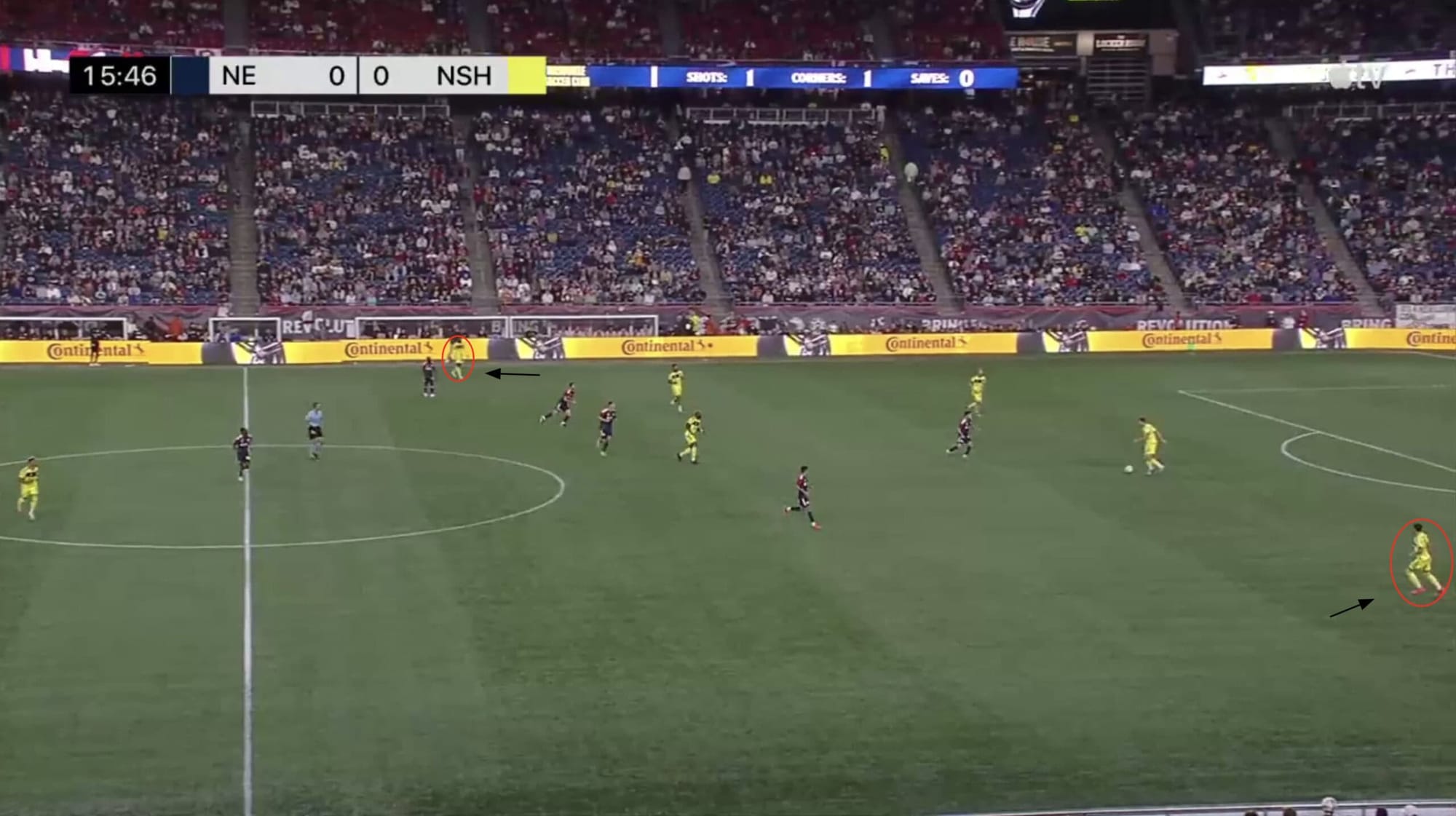
As mentioned above, Moore’s freedom to push further forward and allow Nashville to use the right flank more offensively can be seen here from the game against New England.
In the bottom corner, Daniel Lovitz drops deeper in the same line as the central defenders to offer a short outlet for playing the ball out of the back, while Moore is much more advanced on the opposite side, ready to receive a switch pass or run into space.
While work remains on balancing their offence between the wide players, Moore’s growing importance in this area has allowed for more variety in their attack and improved the offensive confidence of a player who’s been banging on the doors of the US National Team squad for several years now.
Now let’s look at what’s changed for Nashville’s star man, Hany Mukhtar.
Hany Mukhtar Penetrating Carries Map
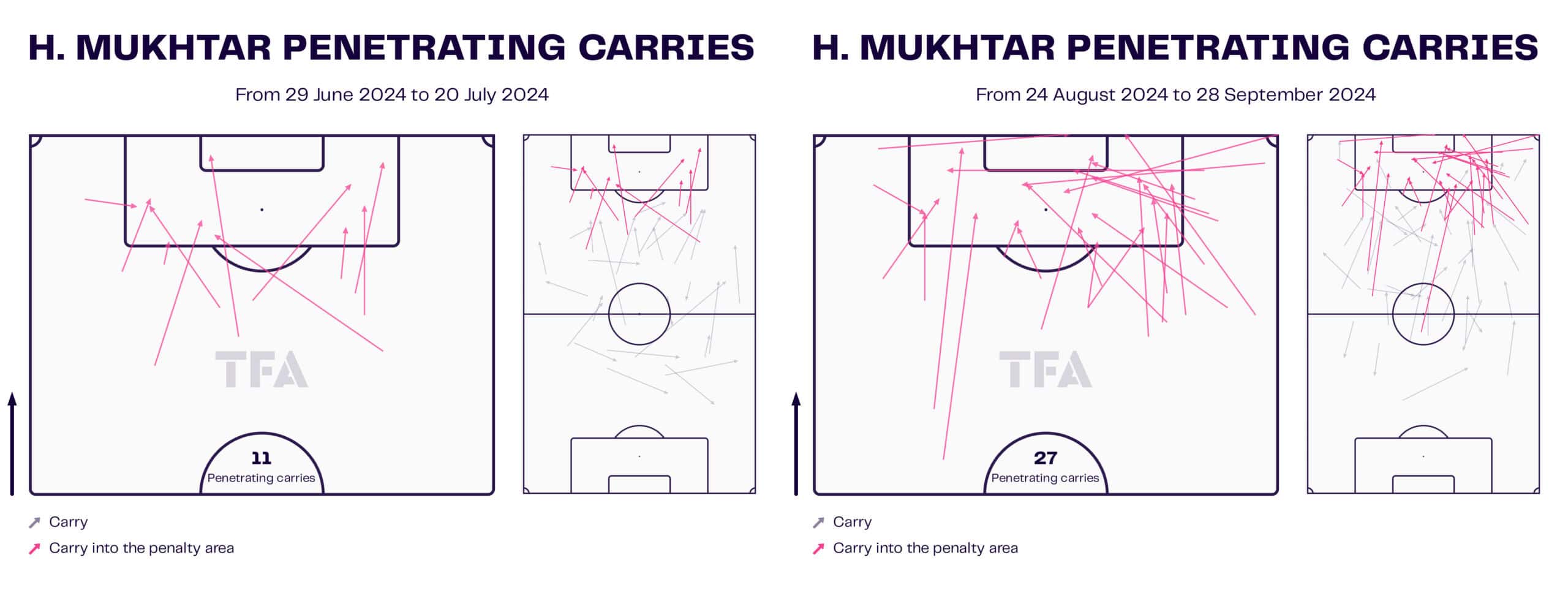
As we can see from the data visualisation above, and as partially evidenced by the sequence of play we saw from the Atlanta game, Nashville’s ability to get their talisman on the ball and allow him to make a mark on proceedings has improved since Callaghan’s arrival.
With 16 more penetrating carries in the same amount of games and more variety in the positions he takes up in the attacking half, Nashville has clearly found ways to get the German player, the one most likely to turn their offensive fortunes around, more involved and in good areas to make things happen for them.
Like the rest of the team, Mukhtar has had a rough year, which has led to a big drop-off in goal productivity from the player who was battling at the top with the very best the league has to offer.
At just 29 years old, Mukhtar has theoretically plenty left to offer, and maybe he will rediscover his old form with this new-look Nashville team.
But for this year, Callaghan’s joining late in the summer may have come too little too late for him to turn things around even sooner.
Conclusion
Following last night’s heartbreaking defeat at home to DC United, it’s safe to say that Nashville’s thin hopes of reaching the post-season have all but evaporated with a lot of ground to make up and only two games left to play.
But reaching the playoffs couldn’t have been an expectation for Callaghan, who took over late in the season, so much as finding a new identity for this team to build a foundation undergoing into next year.
So far, there have been enough encouraging signs to suggest that Nashville is headed on a better path under the former USMNT interim.
However, the path to rebuilding will face more roadblocks, with the off-season arriving early at Geodis Park.
It will be bittersweet for the Boys in Gold to miss out on the playoffs for the first time in their fifth year as an MLS franchise.
But perhaps some of these changes brought about under BJ Callaghan can lend optimism for better times to come in 2025 and, maybe, a return to the heights the club was at less than eighteen months ago.

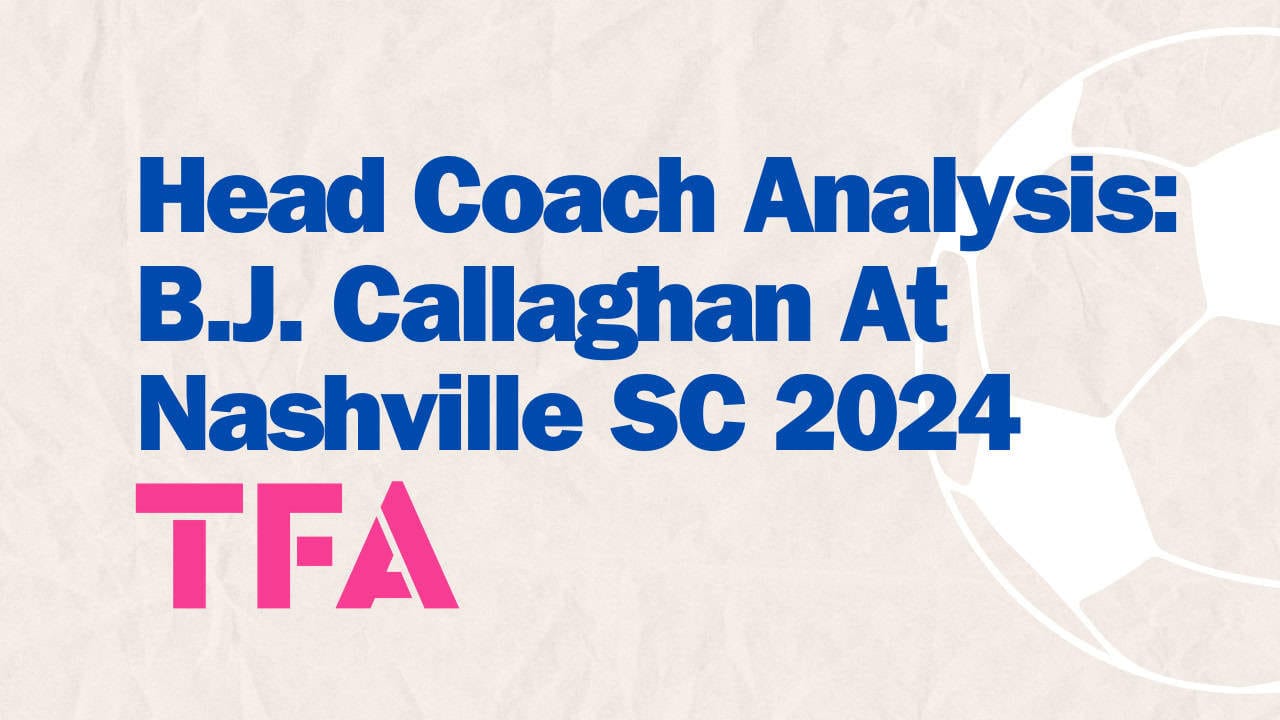




Comments